ROTATING THE SHAPE AROUND THE CENTER
If we rotate the 2d shape about origin, we will follow the rules given below about the angle that we are rotating.
Step 1 :
If center of rotation is something else than origin, we have to draw the horizontal and vertical lines in order to consider we have origin at the specified point.
Step 2 :
From the center of rotation, we have to move horizontally and vertically to get each vertices of the 2d shape.
Step 3 :
Moving right, x-coordinate = positive
Moving left, x-coordinate = negative
Moving up, y-coordinate = positive
Moving down, y-coordinate = negative
Rotating the shape means moving them around a fixed point. There are two directions
i) Clockwise
ii) Counter clockwise (or) Anti clockwise
The shape itself stays exactly the same, but its position in the space will change.
|
90° clockwise 90° counter clockwise 180° 270° clockwise 270° counter clockwise |
(x, y) ==> (y, -x) (x, y) ==> (-y, x) (x, y) ==> (-x, -y) (x, y) ==> (-y, x) (x, y) ==> (y, -x) |
Problem 1 :
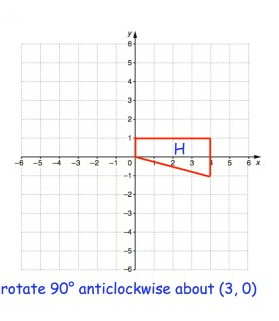
Solution:
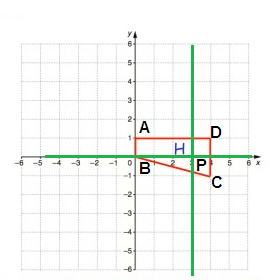
Point A:
From P, move 3 units left and 1 unit up. So, A(-3, 1)
Point B :
From P, move 3 units left and no vertical movement. So, B(-3, 0)
Point C :
From P, move 1 unit right and 1 unit down. So, C(1, -1)
Point D :
From P, move 1 unit right and 1 unit up. So, D(1, 1)
Rule for 90° anti clockwise rotation
(x, y) ==> (-y, x)
|
A(-3, 1) B(-3, 0) C(1, -1) D(1, 1) |
A'(-1, -3) B'(0, -3) C'(1, 1) D'(-1, 1) |
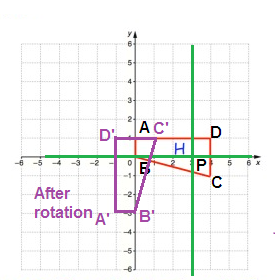
Problem 2 :
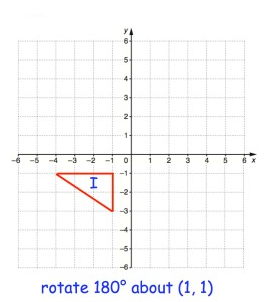
Solution:
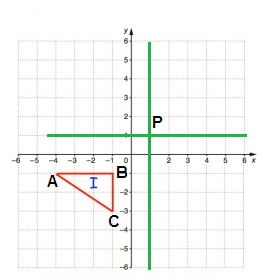
Point A:
From P, move 5 units left and 2 units down. So, A(-5, -2)
Point B :
From P, 2 unit left and 2 units down. So, B(-2, -2)
Point C :
From P, 2 units left and 4 units down. So, C(-2, -4)
Rule for 180° rotation
(x, y) ==> (-x, -y)
|
A(-5, -2) B(-2, -2) C(-2, -4) |
A'(5, 2) B'(2, 2) C'(2, 4) |
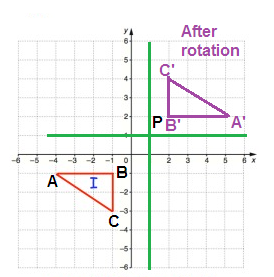
Problem 3 :
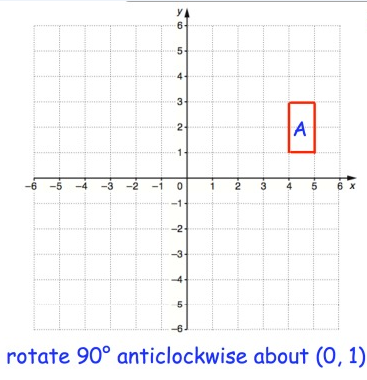
Solution:
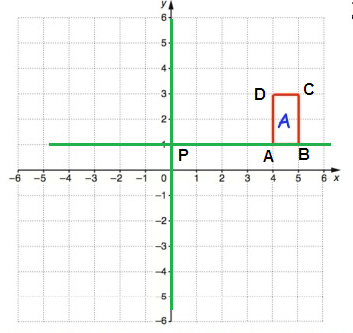
Point A :
From P, move 4 units right and no vertical movement. So, A(4, 0)
Point B :
From P, move 5 units right and no vertical movement. So, B(5, 0)
Point C :
From P, move 5 units right and 2 units up. So, C(5, 2)
Point D :
From P, move 4 units right and 2 units up. So, A(4, 2)
Rule for 90°counter clockwise rotation
(x, y) ==> (-y, x)
|
A(4, 0) B(5, 0) C(5, 2) D(4, 2) |
A'(0, 4) B(0, 5) C(-2, 5) D(-2, 4) |
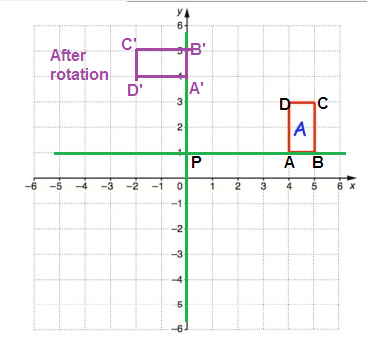
Problem 4 :
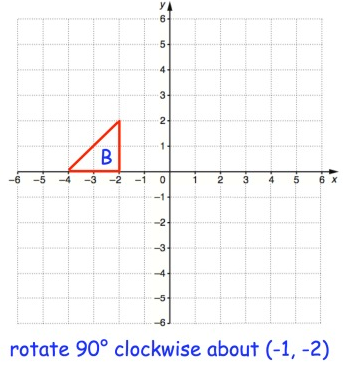
Solution:
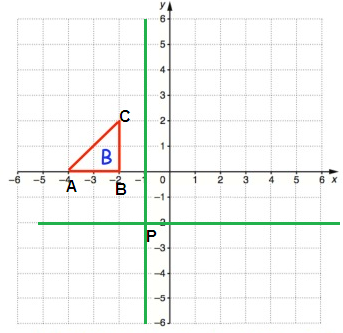
Point A :
From P, move 3 units left and 2 units up. So, A(-3, 2)
Point B :
From P, move 1 unit left and 2 units up. So, B(-1, 2)
Point C :
From P, move 1 unit left and 4 units up. So, C(-1, 4)
Rule for 90° clockwise rotation
(x, y) ==> (y, -x)
|
A(-3, 2) B(-1, 2) C(-1, 4) |
A'(2, 3) B'(2, 1) C'(4, 1) |
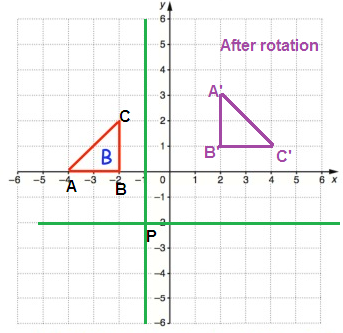
Recent Articles
-
Finding Range of Values Inequality Problems
May 21, 24 08:51 PM
Finding Range of Values Inequality Problems -
Solving Two Step Inequality Word Problems
May 21, 24 08:51 AM
Solving Two Step Inequality Word Problems -
Exponential Function Context and Data Modeling
May 20, 24 10:45 PM
Exponential Function Context and Data Modeling